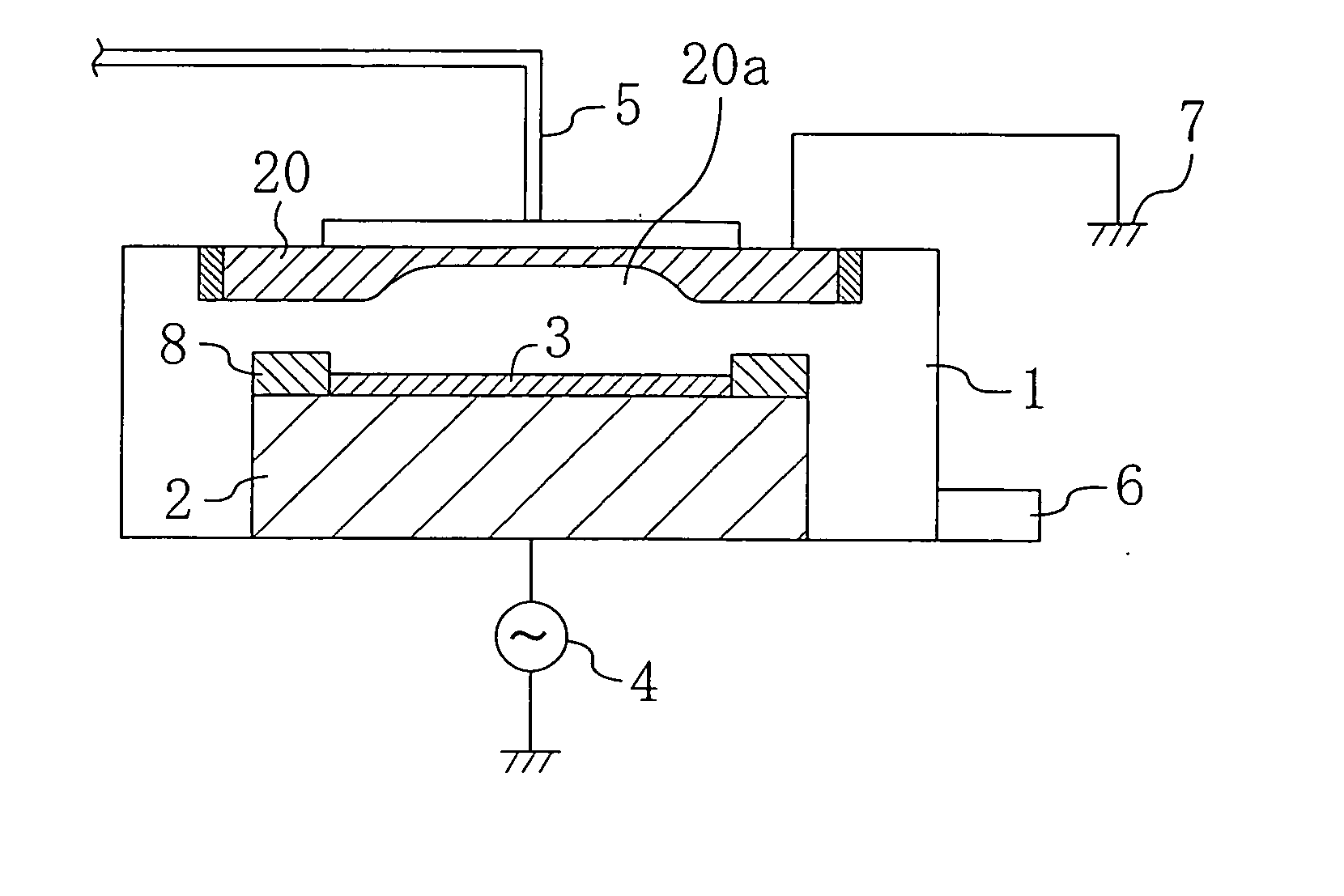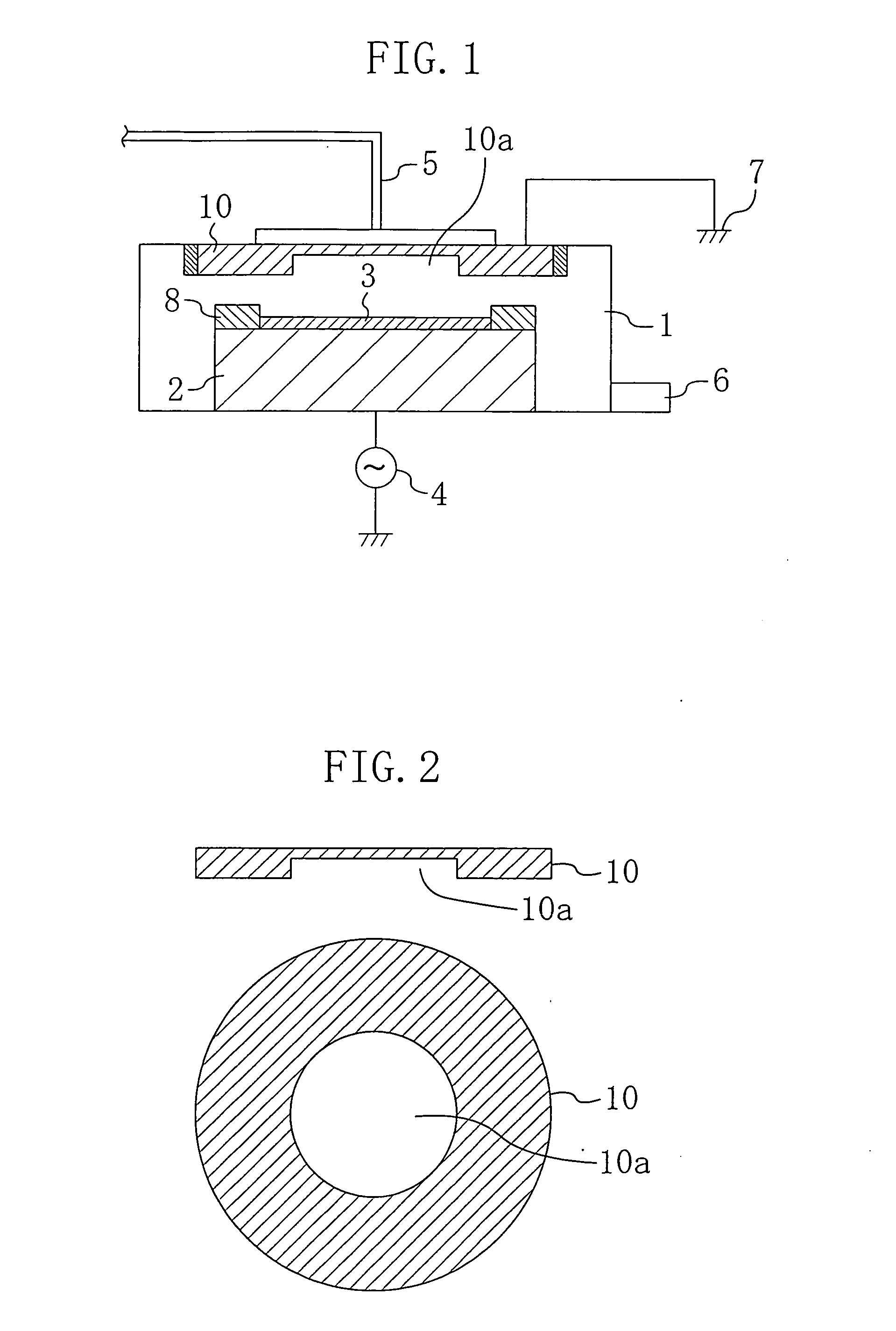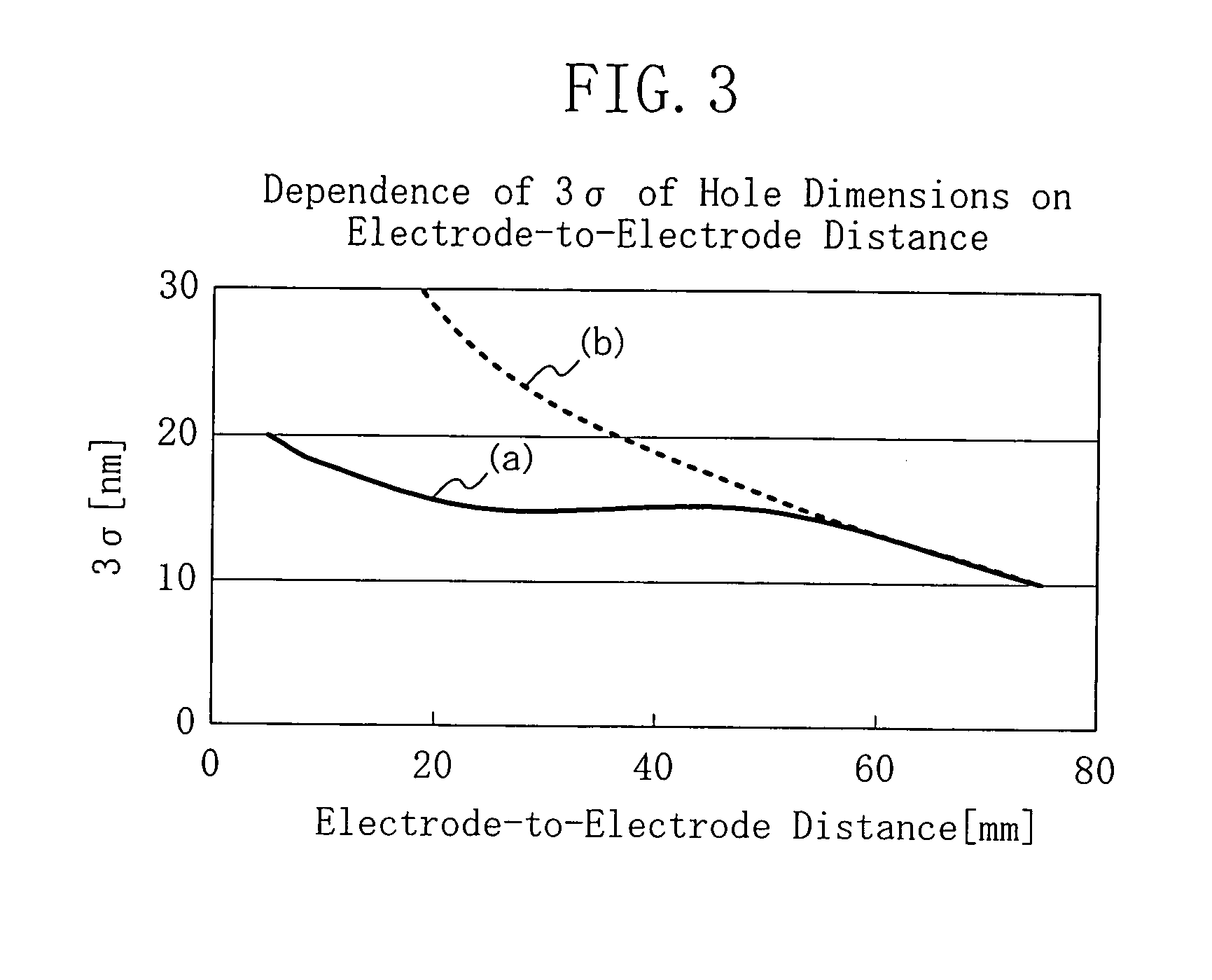Dry etching apparatus and dry etching method
a technology of dry etching and dry etching, which is applied in the direction of electrical apparatus, electrical discharge tubes, basic electric elements, etc., can solve the problems of deteriorating the uniformity of the etching rate of the whole to-be-processed substrate, high difficulty level of high-selectivity etching of siosub>x /sub>film using sin as an etching stopper film, and inconvenience of the etching apparatus, so as to improv
- Summary
- Abstract
- Description
- Claims
- Application Information
AI Technical Summary
Benefits of technology
Problems solved by technology
Method used
Image
Examples
embodiment 1
[0052] A dry etching apparatus and method according to a first embodiment of the present invention will be described hereinafter with reference to the drawings. Etching for forming a contact hole in an oxide film will now be given as an example. FIG. 1 is a schematic view showing the structure of a dry etching apparatus according to the first embodiment.
[0053] As shown in FIG. 1, a lower electrode 2 is provided on the bottom of a reaction chamber 1, and an upper electrode 10 is provided at the ceiling of the reaction chamber 1 to face the lower electrode 2. The lower electrode 2 and upper electrode 10 are separated from each other by as large a space as necessary to generate plasma.
[0054] A focus ring 8 is placed on the lower electrode 2 to hold a to-be-processed substrate (wafer) 3. The focus ring 8 has, at its center, a cavity for holding the to-be-processed substrate 3.
[0055] An RF power supply 4 is provided outside of the reaction chamber 1 to apply voltage to the lower elect...
embodiment 2
[0067] A dry etching apparatus and method according to a second embodiment of the present invention will be described hereinafter with reference to the drawings. Etching for forming contact holes in an oxide film will be described below as an example. FIG. 4 is a schematic view showing the structure of a dry etching apparatus according to the second embodiment. In FIG. 4, the same reference numerals are given to the same members as those of the dry etching apparatus shown in FIG. 1 of the first embodiment.
[0068] The second embodiment is different from the first embodiment in the structure of an upper electrode 20. To be specific, a dome-shaped recess 20a with an inside diameter of 15 cm is formed in the middle part of the upper electrode 20 having an outside diameter of 20 cm and a thickness of 20 mm. The dome-shaped recess 20a has a maximum depth of 5 mm in its middle part, i.e., in the middle part of the upper electrode 20 and becomes shallower with the increase in distance from ...
embodiment 3
[0079] A dry etching apparatus and method according to a third embodiment of the present invention will be described hereinafter with reference to the drawings. Etching for forming a contact hole in an oxide film will be described below as an example. FIG. 6 is a schematic view showing the structure of a dry etching apparatus according to the third embodiment. In FIG. 6, the same reference numerals are given to the same members as those of the dry etching apparatus shown in FIG. 1 of the first embodiment. A description is not given of the members herein.
[0080] The third embodiment is different from the first embodiment in the structure of an upper electrode 30. The upper electrode 30 is composed of two electrodes: a middle part 32 having a thickness of 20 mm and an outside diameter of 10 cm and a doughnut-shaped peripheral part 31 surrounding the side surface of the middle part 32 and having a thickness of 20 mm and an outside diameter of 20 cm. The distance between each of the mid...
PUM
| Property | Measurement | Unit |
|---|---|---|
| hole diameter | aaaaa | aaaaa |
| hole diameter | aaaaa | aaaaa |
| hole diameter | aaaaa | aaaaa |
Abstract
Description
Claims
Application Information
 Login to View More
Login to View More - R&D
- Intellectual Property
- Life Sciences
- Materials
- Tech Scout
- Unparalleled Data Quality
- Higher Quality Content
- 60% Fewer Hallucinations
Browse by: Latest US Patents, China's latest patents, Technical Efficacy Thesaurus, Application Domain, Technology Topic, Popular Technical Reports.
© 2025 PatSnap. All rights reserved.Legal|Privacy policy|Modern Slavery Act Transparency Statement|Sitemap|About US| Contact US: help@patsnap.com



